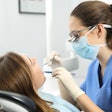
Oral healthcare needs to be prioritized and addressed, with renewed initiatives and investments in research that focus on oral healthcare equity, urged a commentary published on December 21 in the Lancet. The commentary accompanies the recently released update to the U.S. surgeon's general report on health.
The commentary highlights the interplay of socioeconomic factors for overall and oral health in communities. The authors, led by Dr. Bruce Dye, a dental epidemiology officer at the U.S. National Institute of Dental and Craniofacial Research (NIDCR), contributed to the December 21 report released by the U.S. National Institutes of Health and the NIDCR.
"Oral health is not only influenced by access to care, but also by education, economic stability, and the neighbourhoods and environments in which people live," Dye and colleagues wrote in the Lancet commentary.
Good news, bad news
Comparing the new 2021 NIH report with the surgeon general's 2000 report reveals that the U.S. has made progress in several areas over the last 20 years, although many challenges remain, according to Dye et al.
One piece of good news is that the U.S. has expanded dental coverage for children over the past 20 years to the point where it is now nearly universal. This accomplishment was achieved through a variety of policy initiatives, including state-administered Medicaid programs, the Children's Health Insurance Program, and marketplace initiatives authorized under the Affordable Care Act.
In addition to this progress on the policy front, initiatives by medical and dental professionals have also led to better outcomes for children since the 2000 report.
"Collaborations between oral health and medical professionals, along with the promotion of early visits and interventions, have contributed to a reduction of more than 40% in untreated caries among preschool children (≤5 years), including those from low-income families," the authors wrote.
On the other hand, some areas of oral healthcare have seen little or no improvement in the past 20 years.
"Untreated dental caries in permanent teeth affect one of four Americans aged 6 years and older, with no improvement since the 2000 report," the authors wrote.
In addition, with respect to tooth retention in older adults, the disparity between those living in poverty and those who are more affluent has nearly doubled in the past 20 years, reflecting widening inequality in the U.S. over that time period.
Infectious diseases
Another major development reflected in the new NIH report is the ongoing COVID-19 pandemic and its effect on oral healthcare. In the commentary, the authors addressed the reasons why populations vulnerable to COVID-19 are also more likely to struggle with poor oral health.
"In the USA, long-standing systemic health and social inequities have placed racial and minority ethnic groups, those living in poverty or with special health-care needs, and older people at increased risk of becoming infected, being hospitalised, and dying from COVID-19," the authors wrote.
Another viral infection with severe consequences for oral health is human papillomavirus (HPV).
The prevalence of HPV-associated oropharyngeal cancers has doubled in the past 25 years, with most of the increase occurring in adult men, Dye et al noted.
"Oropharyngeal cancers are now the most common HPV-related cancers in the USA with an incidence that exceeds HPV-positive cervical cancers," the authors wrote.
Finally, the authors called for policy initiatives to reduce risk factors for HPV and more widespread vaccination against HPV.
"Vaccination against HPV substantially reduces oral HPV infections and along with efforts to reduce risk factors for HPV infection offer promise for the future," the authors wrote.



















